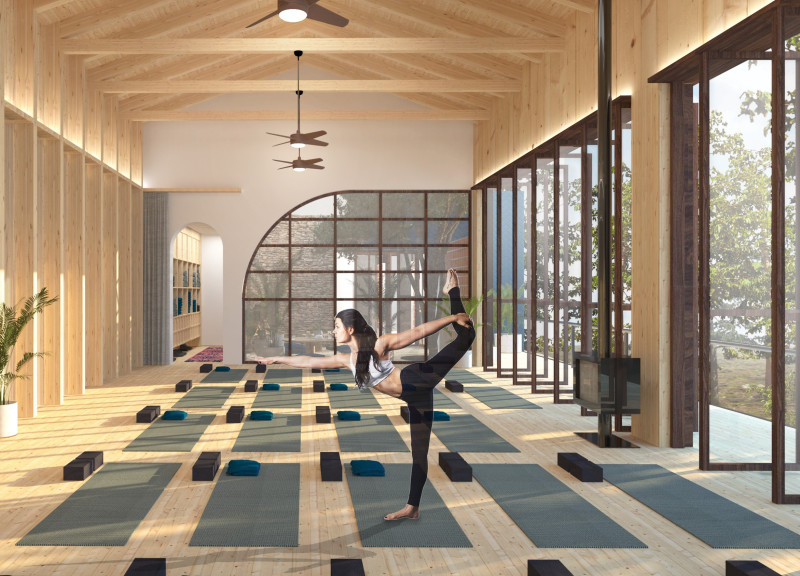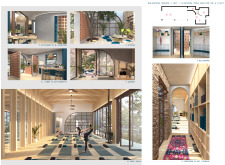5 key facts about this project
The project under analysis represents a contemporary architectural intervention that exemplifies both functionality and aesthetic coherence. Located in an urban setting, the structure operates as a mixed-use development, accommodating residential units, commercial spaces, and communal areas. Its design reflects a thoughtful integration into the surrounding context, taking into account local culture and environmental factors. The organization of spaces adheres to principles of accessibility and sustainability, ensuring that both residents and visitors can navigate the building with ease.
A hallmark of this architectural project is its innovative use of sustainable materials and technologies. The structure incorporates an envelope made from high-performance insulation alongside locally sourced stone cladding. This not only enhances thermal efficiency but also establishes a visual connection to the regional context. Additionally, the building features extensive glazing that serves to maximize natural light while minimizing energy consumption.
Contextual Integration and Unique Design Approach
The project distinguishes itself through its contextual integration and unique design approach. Rather than adhering strictly to a single architectural style, it embraces a hybrid aesthetic that captures elements of modernism while respecting traditional forms. The façade is characterized by a rhythmic pattern of openings that not only provides visual interest but also fosters cross-ventilation. This adaptive design ensures that the building maintains a human scale in its surroundings, promoting interaction among users.
Moreover, public spaces have been thoughtfully integrated into the design. A central atrium serves as a communal gathering point and encourages social interaction among occupants. The use of greenery within these spaces contributes to the project’s biophilic design, enhancing the occupants’ well-being. The careful placement of these communal areas reflects a growing acknowledgment of social sustainability within architectural practice.
Sustainable Practices and User-Centric Design
Incorporating sustainability into the design was a priority, evident in the implementation of various energy-efficient systems. Photovoltaic panels on the roof harness solar energy, contributing to the building's energy needs, while a rainwater harvesting system provides for irrigation and non-potable water use. Furthermore, smart building technologies are integrated to monitor and manage energy consumption, promoting a culture of sustainability among residents.
User-centric design principles are also evident throughout the project. Each residential unit is designed with flexible layouts that cater to diverse lifestyles. Balconies and terraces extend living spaces outward, allowing for personalized outdoor experiences. The circulation paths within the building prioritize accessibility and safety, ensuring that all users, regardless of mobility challenges, can navigate the interior seamlessly.
For readers interested in delving deeper into the architectural specifics, exploring the architectural plans, architectural sections, and architectural designs will offer additional insights into the project’s functional and aesthetic rationales. Understanding the architectural ideas presented can enhance the appreciation of how this project harmonizes with the environment and serves its community.






















































